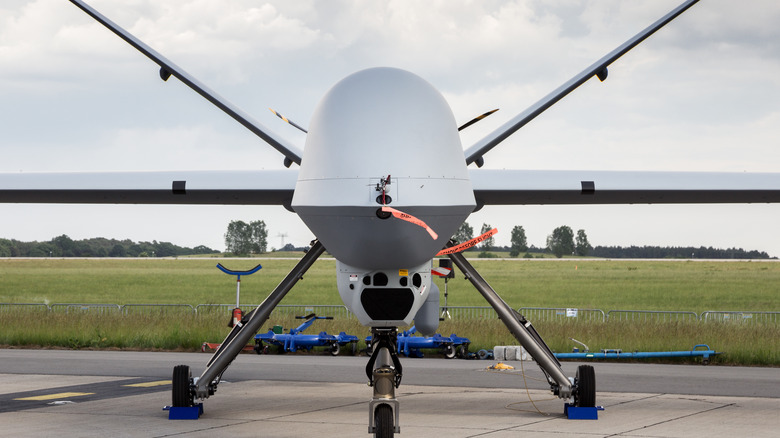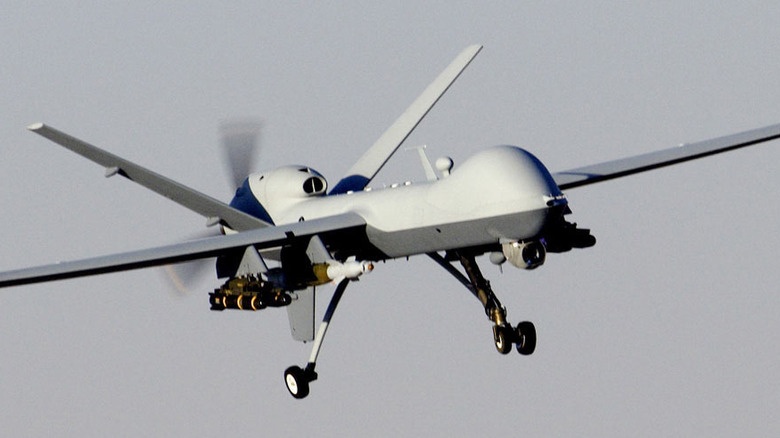How The MQ-9 Reaper Drone Is Changing How The Military Feels About Traditional Runways
The ability to land on a surface other than a perfectly smooth, paved airstrip is a rare and valuable commodity in combat. Of course, specialty aircraft like the AV-8B Harrier II "Jump Jet" and Lockheed Martin F-35B Lightning II already exist, but the U.S. Air Force recently confirmed primitive landing capability in a much larger swath of aircraft.
In a June 15 Air Force training exercise near Fort Stockton in Texas, an MQ-9 drone — better known by its nickname "Reaper" — successfully landed on a dirt strip. The Reaper drone typically accomplishes takeoffs and landings under the manual control of a flight crew and utilizing a system of "line of sight" antennas.
Director of operations for the 2nd Special Operations Squadron, Lt. Col. Brian Flanigan, said in a statement that the "team of aircrew, maintainers, and special tactics Airmen have proven the Reaper can operate anywhere in the world and is no longer beholden to the 'leash' of perfectly paved runways or line-of-sight antennas traditionally used to take off and land the aircraft."
The dirt landing builds on the success of another Reaper drone that set down on a rural highway in Wyoming last month wherein a much larger MC-130J Commando II propellor driven plane also executed a landing on the same stretch of highway, as did a pair of A-10s. This exercise, named "Agile Chariot," was intended as practice for the military to use unconventional locations for air operations instead of relying on traditional bases and infrastructure.
The Reaper's role is being expanded
Besides accomplishing a dirt landing, the Reaper drone was also equipped with a "travel pod" filled with supplies for troops down at the landing area. While it can't handle enormous payloads, "what it can hold might be the difference between getting that critical aircraft part to an isolated airfield or bringing in a blood supply for casualties sustained during a base attack," according to Flanigan. The resupply experiment, dubbed "Reaper Express," represents an expansion of the potential use of drones beyond their typical roles of remote attack and surveillance.
The Reaper is an unmanned aerial vehicle (UAV) built by General Atomics and primarily used by the U.S. Air Force. Flying since 2001, the Reaper is often considered the first "hunter-killer" UAV and is known for its impressive endurance — up to 34 hours of flight time for certain models. If the time comes to take offensive measure, the drone can respond with a brace of Hellfire missiles. Although it serves its purpose well, plans are in place to phase out the Reaper by 2035.

